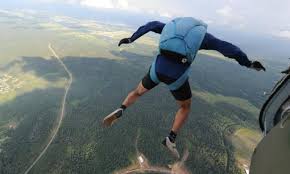The three-dome parachute system was first introduced at Innoprom
 The Technodinamika holding of the Rostec State Corporation at the Innoprom-2016 forum for the first time demonstrates a reduced copy of a mock parachute system designed for the safe landing of an increased mass-controlled space module with a crew of up to six people.
The Technodinamika holding of the Rostec State Corporation at the Innoprom-2016 forum for the first time demonstrates a reduced copy of a mock parachute system designed for the safe landing of an increased mass-controlled space module with a crew of up to six people.
Unlike its predecessor, the Soyuz space shuttle parachute system, it is three-domed and has a higher payload.
“Today, only three countries in the world have such systems: Russia, the USA and China,” said Alexander Litvinov, Deputy General Director of Technodynamics for Innovation, Development and Sales. “Our enterprise“ Research Institute of Parachute Engineering ”is the only one in Russia and one of the few in the world that develops the most sophisticated parachute systems for any purpose, including for use in the atmospheres of Mars and Venus.”
The indisputable advantages of the research institute are many years of experience in modeling, a large amount of accumulated data, as well as the availability of a software package for mathematical modeling of our own design, which allows us to reduce the amount of experimental testing for the customer.
Specialists of the SRI PS took part in the Energy-Buran space program, developing a system for landing a ship weighing 70 tons. In the 1990s, they also created rescue systems for accelerators (boosters) weighing up to 40 tons for the French Arian-5 rocket. The development was used in testing the space program of the French Space Agency.
As for the latest systems, parachutes similar in tasks were developed by American companies for the Drago and Orion ships. However, all systems are unique, because, in addition to the difference in mass and type of ship, they differ in speed and type of landing.
Tekhnodinamika specializes in the development, production and after-sales service of aircraft systems and assemblies. In addition, the holding produces parts and assemblies for such industries as oil and gas, automotive, transport, energy. “Technodynamics” includes 35 enterprises located throughout the country: in Moscow, Moscow Region, Ufa, Samara, Yekaterinburg, Arkhangelsk Region and other regions of Russia. The holding is part of the Rostec State Corporation.



